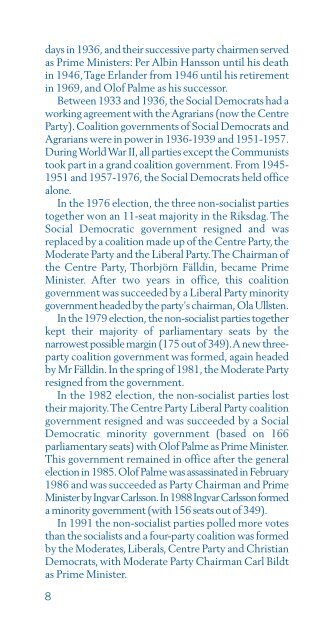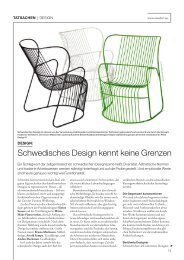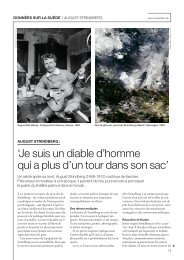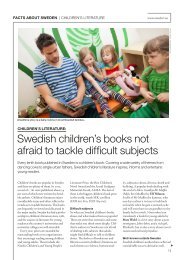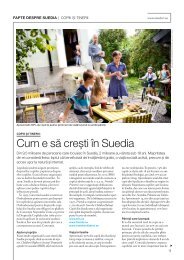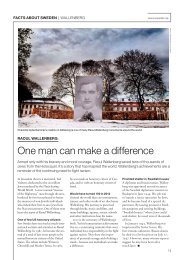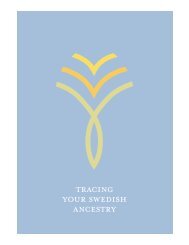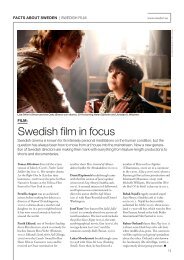Election Guide 2002 - Sweden.se
Election Guide 2002 - Sweden.se
Election Guide 2002 - Sweden.se
Create successful ePaper yourself
Turn your PDF publications into a flip-book with our unique Google optimized e-Paper software.
days in 1936, and their successive party chairmen <strong>se</strong>rved<br />
as Prime Ministers: Per Albin Hansson until his death<br />
in 1946, Tage Erlander from 1946 until his retirement<br />
in 1969, and Olof Palme as his successor.<br />
Between 1933 and 1936, the Social Democrats had a<br />
working agreement with the Agrarians (now the Centre<br />
Party). Coalition governments of Social Democrats and<br />
Agrarians were in power in 1936-1939 and 1951-1957.<br />
During World War II, all parties except the Communists<br />
took part in a grand coalition government. From 1945-<br />
1951 and 1957-1976, the Social Democrats held office<br />
alone.<br />
In the 1976 election, the three non-socialist parties<br />
together won an 11-<strong>se</strong>at majority in the Riksdag. The<br />
Social Democratic government resigned and was<br />
replaced by a coalition made up of the Centre Party, the<br />
Moderate Party and the Liberal Party. The Chairman of<br />
the Centre Party, Thorbjörn Fälldin, became Prime<br />
Minister. After two years in office, this coalition<br />
government was succeeded by a Liberal Party minority<br />
government headed by the party’s chairman, Ola Ullsten.<br />
In the 1979 election, the non-socialist parties together<br />
kept their majority of parliamentary <strong>se</strong>ats by the<br />
narrowest possible margin (175 out of 349). A new threeparty<br />
coalition government was formed, again headed<br />
by Mr Fälldin. In the spring of 1981, the Moderate Party<br />
resigned from the government.<br />
In the 1982 election, the non-socialist parties lost<br />
their majority. The Centre Party Liberal Party coalition<br />
government resigned and was succeeded by a Social<br />
Democratic minority government (ba<strong>se</strong>d on 166<br />
parliamentary <strong>se</strong>ats) with Olof Palme as Prime Minister.<br />
This government remained in office after the general<br />
election in 1985. Olof Palme was assassinated in February<br />
1986 and was succeeded as Party Chairman and Prime<br />
Minister by Ingvar Carlsson. In 1988 Ingvar Carlsson formed<br />
a minority government (with 156 <strong>se</strong>ats out of 349).<br />
In 1991 the non-socialist parties polled more votes<br />
than the socialists and a four-party coalition was formed<br />
by the Moderates, Liberals, Centre Party and Christian<br />
Democrats, with Moderate Party Chairman Carl Bildt<br />
as Prime Minister.<br />
8


